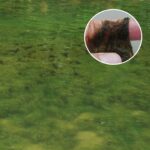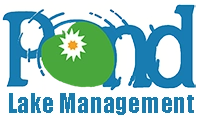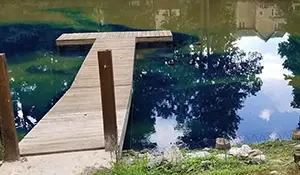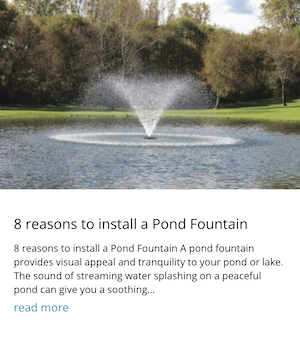How to apply Pond Dyes to your Pond

Add Pond Dyes to keep your pond looking good!
What is Pond Dye and why should you consider using it?
Pond dyes contain colorants that are similar to food dyes and are not considered harmful to wildlife. It is important to note that there are some things an aquatic dye won’t do. Aquatic dyes are not herbicides, and they are not intended to kill the plants in your pond.
Pond water dyes don’t hurt fish or other aquatic animals, they can affect desirable submergent plants that fish and other aquatic life may use for food and habitat. Pond dyes act by shading out these shallow water areas and minimize the ability for submersed aquatic growth to grow. They are in essence filtering out the rays of sunlight that are paramount for photosynthesis. This results in less frequent and smaller dose pesticide applications over the year, requiring you to spend less on chemical treatments.
It is popular to add Blue Pond dyes in ponds and they are most often used to improve the aesthetic look of your pond. Every pond has unique characteristics which determine the natural watercolor (soil type, vegetation, and runoff).
How to apply a pond Dye yourself?
Generally, Pond Dye requires no special equipment to apply. The liquid formula should be poured directly into the pond on the upwind shoreline. Natural wave action and currents will distribute the dye throughout the entire pond within 24 hours. Though pond dyes are harmless, care should be taken to avoid spills that can stain your hands, clothes, or walk paths.
Pond dye requires consistent maintenance doses during the times of the year when there is significant rainfall. The dye lasts until it is diluted by excessive rainfall or completely washed out by runoff. Dyes are also not feasible in spring-fed ponds or lakes that continually flow over drain pipes or spillways. We do not recommend making dye applications when significant rain is forecast
Pond Dyes help control Filamentous and Blue-Green Algae.
 There are several products on the market for this purpose. Dyes are found to be most effective in controlling filamentous and blue-green algae. Aquatic dyes add blue or blue-green color to the water to reduce sunlight penetration. When used as a shade, dyes help to reduce growth by blocking photosynthesis. Blue dye in ponds is shown to not harm animals or floating and emergent plants in ponds.
There are several products on the market for this purpose. Dyes are found to be most effective in controlling filamentous and blue-green algae. Aquatic dyes add blue or blue-green color to the water to reduce sunlight penetration. When used as a shade, dyes help to reduce growth by blocking photosynthesis. Blue dye in ponds is shown to not harm animals or floating and emergent plants in ponds.
Pond dyes can be used year-round.
Pond Lake Manage offers Pond Dye for Sale in our Online Store for those desiring to apply their own Pond Dye. If you would like help with applying Pond Dye to your Pond we can help with application services and we offer maintenance contracts for ongoing assistance.
Call us with any questions 336.669.1016 or complete our Pond Assessment Request Form.





